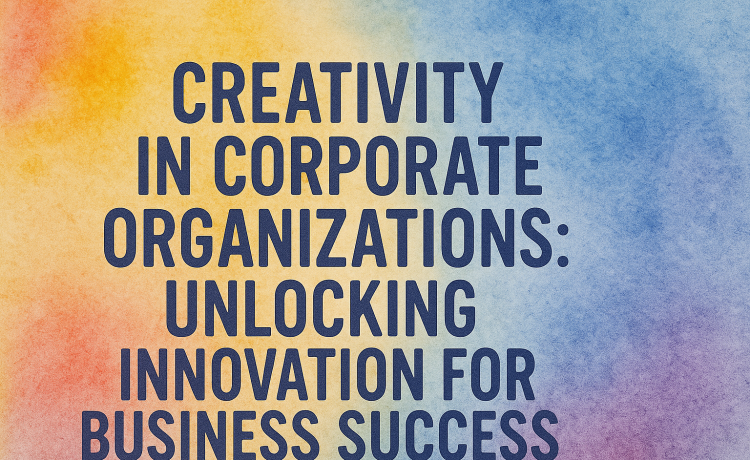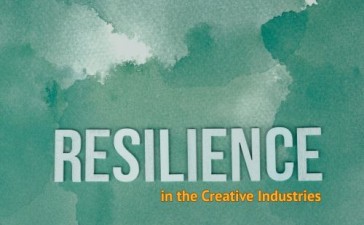In today’s rapidly evolving business landscape, creativity has emerged as a crucial differentiator between thriving organizations and those struggling to maintain relevance. Far from being confined to artistic endeavors, creativity in corporate settings represents a strategic approach to problem-solving, innovation, and organizational growth that can transform both internal operations and market positioning.
Understanding Corporate Creativity
Corporate creativity extends beyond occasional brainstorming sessions or colorful office spaces. At its core, it involves cultivating an environment where innovative thinking becomes embedded in organizational DNA. This means developing systems that encourage employees to question established processes, imagine alternative approaches, and implement novel solutions that drive business value.
When properly harnessed, creativity becomes a powerful business tool that influences everything from product development and customer experience to operational efficiency and employee engagement. It represents the ability to connect seemingly unrelated concepts, identify hidden opportunities, and develop unique solutions that competitors cannot easily replicate.
The Business Case for Creativity
The tangible benefits of fostering creativity in corporate environments are well-documented. Research consistently demonstrates that creative organizations enjoy advantages in several key areas:
Market differentiation stands as perhaps the most visible outcome. In saturated markets where products and services increasingly resemble one another, creative approaches to customer problems can establish meaningful distinction. Companies like Apple and IKEA have built their identities around creative solutions that reimagine customer experiences.
Adaptability represents another critical advantage. Organizations that cultivate creativity develop a natural resilience to market disruptions. By maintaining a culture that embraces exploration and experimentation, these companies can pivot more effectively when faced with unexpected challenges or opportunities.
Problem-solving capabilities similarly benefit from creative approaches. When teams are encouraged to think beyond conventional solutions, they discover more efficient pathways to resolving complex business challenges. This often results in operational improvements that reduce costs while enhancing outcomes.
Employee engagement and retention also strengthen in creative environments. Professionals increasingly seek workplaces that value their intellectual contributions beyond task completion. Organizations that provide outlets for creative expression typically report higher satisfaction rates and lower turnover among knowledge workers.
Barriers to Corporate Creativity
Despite its benefits, many organizations struggle to cultivate genuine creativity. Several common barriers exist in traditional corporate structures:
Risk aversion often dominates decision-making processes in established organizations. When leadership prioritizes predictable outcomes over potential breakthroughs, creative initiatives frequently stall before demonstrating their value. This creates a self-reinforcing cycle where “safer” approaches prevail even when they deliver diminishing returns.
Hierarchical structures can similarly impede creative flow. When ideas must navigate multiple approval layers before implementation, innovative thinking often becomes diluted or discouraged. Organizations where creativity thrives typically implement more flexible frameworks that allow ideas to develop with appropriate guidance rather than rigid oversight.
Performance metrics focused exclusively on short-term results can undermine creative efforts that require longer development cycles. When evaluation systems fail to account for exploration and experimentation, employees naturally gravitate toward activities with more immediate, measurable outcomes.
Cultural inertia presents perhaps the most challenging barrier. Organizations with deeply established ways of working often develop unconscious resistance to new approaches. This manifests in phrases like “we’ve always done it this way” that subtly discourage divergent thinking.
Cultivating Corporate Creativity
Forward-thinking organizations implement specific strategies to overcome these barriers and foster environments where creativity flourishes:
Leadership commitment stands as the foundation. When executives demonstrate genuine interest in creative approaches through their actions, resources, and communication, it signals organizational permission for innovative thinking at all levels.
Psychological safety creates the conditions where employees feel comfortable sharing unusual ideas without fear of ridicule or career consequences. Organizations like Google have identified this as a critical factor in team innovation and performance.
Diverse perspectives fuel creative thinking by bringing together individuals with different backgrounds, experiences, and thinking styles. Homogeneous teams, while often more comfortable, typically generate less innovative solutions than those representing varied viewpoints.
Structured exploration processes help channel creative energy toward business objectives. Methodologies like design thinking provide frameworks that guide creative problem-solving while maintaining focus on tangible outcomes.
The Future of Corporate Creativity
As organizations navigate increasingly complex business environments, creativity will likely become even more central to competitive advantage. Several emerging trends suggest how this evolution may unfold:
Cross-functional collaboration will intensify as organizations recognize that breakthrough innovations often emerge at the intersection of different disciplines. Companies that can effectively blend technological, design, and business perspectives will develop more compelling solutions.
AI augmentation presents both challenges and opportunities for corporate creativity. While artificial intelligence can handle routine tasks and generate baseline ideas, human creativity will increasingly focus on more nuanced innovation that requires emotional intelligence, ethical judgment, and cultural understanding.
Distributed creativity models will expand as remote and hybrid work arrangements become permanent features of corporate landscapes. Organizations must develop systems that facilitate creative collaboration across physical and temporal boundaries.
Conclusion
Creativity in corporate organizations represents far more than an occasional initiative or departmental responsibility. When properly cultivated, it becomes a fundamental business capability that drives innovation, adaptation, and sustainable growth.
The organizations that thrive in coming decades will be those that successfully transform creativity from an abstract concept into a concrete business practice embedded throughout their operations. By addressing structural and cultural barriers while implementing supportive practices, companies can unlock the full creative potential of their people—transforming not only their market offerings but also their organizational identity.
💥 Want to learn more?
Find out more:
👉 Launch Pad + Accelerator Expressions of Interest
👉 Selling and Licensing Your Art & Designs Around the World with ArtSHINE
We’re here to help you take action—just like we’ve helped thousands of entrepreneurs, business owners, and creative professionals around the globe.
✨ Want regular inspiration, mindset tips, and art licensing opportunities sent straight to your inbox?
Sign up for the ArtSHINE Weekly Newsletter and stay connected to a creative community that’s growing, thriving, and shining together.
Now is the time to let your passion SHINE.
Now is the time to Make Tomorrow Today!
To your success,
Vinh Van Lam & Stuart Horrex
Cofounders, ArtSHINE.com





